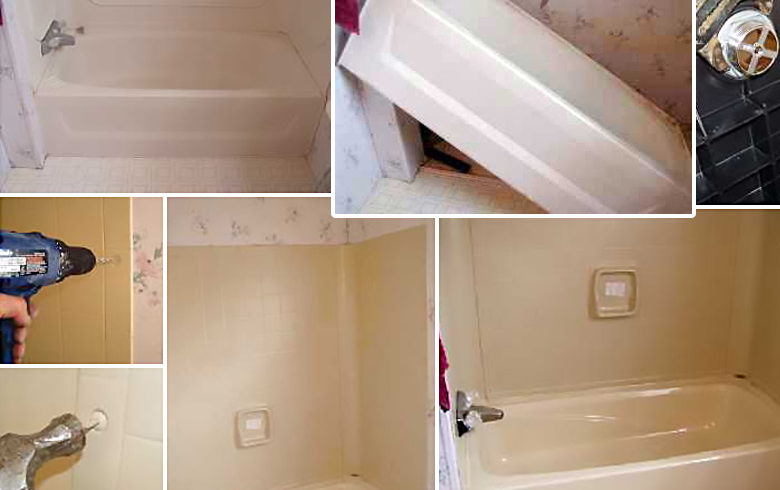Every person has their own individual theory on the subject of Hiring a Plumbing Company.

Polymer bathrooms, shower trays, and other acrylic restroom ware have actually ended up being much more common in shower rooms in recent times. Not as resilient and also elegant as enamel and porcelain bathrooms and also components, they are more budget friendly as well as offer pretty a lot the exact same basic function. Some usual instances of damage to acrylic shower room fixtures include discoloration, cracks, openings, etc.
Bath Staining
With prolonged usage of acrylic bathrooms comes staining or discoloration. While some stains can be removed easily, using special chemicals, others need that the bathroom be resprayed. Aromatherapy oils loosen up the dust in some instances thereby bring back the bath to its former magnificence.
Chemical Reactions
Often, people attempt to paint the whole surface of their acrylic bath by themselves either because they do not such as the shade to conceal blemishes. You need to never make use of paint cleaner on acrylic baths. Paint eliminators do not respond with the surface of metal bathrooms, they ruin acrylic baths irreversibly.
Damaged shower or bath surface
Acrylic bathroom components are not abrasion-resistant like enamel varieties. They are more vulnerable to scratches as well as less sturdy. Being an extremely soft material, acrylic scrapes can even be hidden without coating or filling. For these, you should seek specialist assistance for your bath repair services. As a prevention pointer, prevent using unpleasant sponges when cleaning. Instead, you need to utilize a simple fluid cleaner with a soft pad.
Cracked Polymer Baths
The life expectancy of acrylic and also fiberglass bathrooms is up to 15-20 years for shower pans and baths, typically. Cracks in an acrylic shower tray are most likely among the simplest issues to fix for a repair service expert. This is the exact same for PVC, resin, and other such materials.
Acrylic baths, shower trays, as well as various other acrylic shower room ware have actually ended up being a lot more typical in washrooms in recent times. With extended use of acrylic baths comes discoloration or staining. You must never use paint eliminator on acrylic baths. Paint removers do not respond with the surface of metal bathrooms, they damage acrylic bathrooms irreversibly. The life expectancy of acrylic as well as fiberglass baths is up to 15-20 years for shower pans and also bathrooms, generally.
How to clean Acrylic shower
USE THESE NON-ABRASIVE CLEANERS
We recommend that you clean your acrylic bathing product made of Delta ProCrylic or Acrylic with Innovex Technology with non-abrasive soaps and cleaners, such as:
- Dishwashing detergent
- Power Bathroom Cleaner
- CLR Bath & Kitchen Cleaner
- Formula 409 All-Purpose Cleaner
- Iron Out Rust Stain Remover
When it s time to clean, always use a terry cloth towel, soft cloth or sponge to avoid scratching the acrylic surface. Don t use abrasive scrubbing pads, steel wool or sponges, cause permanent damage to the acrylic material. If you use a drain cleaner or clog remover, be sure to rinse thoroughly with water so no product is left standing near the drain.
Some chemicals and cleaners may deteriorate acrylic surfaces, causing cracks and, potentially, property damage. To avoid this, don t use cleaning products that state on their label that they are not suitable for use on Acrylic, ABS, Polystyrene or Plastic. Be sure to check the label of any product before you apply it to the surface; it s easier to avoid damage than to try to remedy it.
DO NOT USE THESE CLEANERS
Chemicals we do not recommend using to clean acrylic showers/tubs:
- Solvents (turpentine, lacquer thinner, mineral spirits, paint thinner, MEK, xylene, acetone, naphtha, etc.)
- Simple Green All-Purpose Cleaner
- Pine-Sol Original
- Scrubbing Bubbles Cleaner
- Tilex Bathroom Cleaner
- The Works Tub & Shower Cleaner
- Lysol with Hydrogen Peroxide Multi-Purpose Cleaner
- Windex Vinegar Multi-Surface Cleaner
Sealant Application Tips
When you re ready to apply sealant, a little planning goes a long way. Pick up some painter s tape and use it to mask off the seam to help make cleaning up easier. When you re applying the bead, use a constant, steady speed to avoid an uneven finish. Use a caulk tool or a plastic spoon to work the sealant into the joint. Wetting the tool with denatured alcohol will help create a smooth finish. Follow the directions on the back of the tube for cure time.
Certain chemicals and cleaners may deteriorate acrylic surfaces, causing cracks and, potentially, property damage. After you re finished applying it, clean up the product surface and remove any excess sealant with denatured alcohol. Don t use solvents (turpentine, lacquer thinner, mineral spirits, paint thinner, MEK, xylene, acetone, naphtha, etc.) that can wreak havoc on an acrylic surface.
With a little care and consideration, you can prevent damage to your acrylic shower or tub. Keep a supply of soft cloths handy and remove any damaging products or abrasive scrubbing items from the bathroom to ensure they aren t around when it s time to clean.
https://www.deltafaucet.com/design-innovation/inspiredliving/how-to-clean-acrylic-shower

Do you like reading about Hiring a Plumbing Expert? Try leaving a comment further down. We will be pleased to know your thinking about this page. We hope that you come back again before long. Enjoyed reading our post? Please share it. Help someone else locate it. Bless you for your time. Visit again soon.
Act immediately.
Comments on “Common Acrylic Bathroom Snags and Simple Solutions”